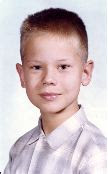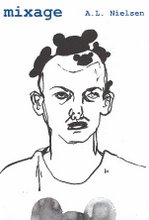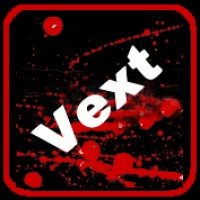
Christine A Meilicke
Jerome Rothenberg’s Experimental Poetry and Jewish Tradition. Bethlehem, PA: Lehigh University Press, 2005. 328 pp. Cloth $59.50.
Despite having been a major participant in, and even the progenitor of, several crucial movements in recent American poetry, Jerome Rothenberg has not received a great deal in the way of critical attention. Rothenberg has been credited with coining the term from which the "Deep Image" movement in poetry took its name, and yet, even as deep image poets such as Robert Bly and W.S. Merwin continue to be widely read, Rothenberg is already in need of a recovery for literary history; this even though Rothenberg is a frequent reader at universities and reading series internationally and has published many of the most important literary anthologies taught in classrooms. Christine Meilicke notes that "it is conspicuous that Rothenberg’s anthologies receive more attention than his poetry" and that "informed comments on Rothenberg’s poetry are rare" (31). Her own commentaries on Rothenberg are, at the very least, informed, and it may be hoped that this book will go a long way toward initiating discussions we should have had long ago.
In part, the problems with the reception of Rothenberg’s art are generational. By this I do not refer to generations of immigrant culture. On that score, Meilicke advances the proposition that some confusion may arise from the fact that "even though Rothenberg logically belongs to the second generation, he exhibits many traits typical of the third generation" (39) Of greater pertinence to the critical responses to Rothenberg’s work may be his position in the succeeding generations of modernism and its discontents. Jerome Rothenberg is a successor to both the Euro-modernist traditions of dadaism, surrealism and futurism, and the American poetics of Williams and the Objectivists. His work clearly communes with the mid-century projective verse of Charles Olson and belongs with the communities of experimentation represented by Donald Allen’s 1960 anthology The New American Poetry. As might be expected from that lineage, Rothenberg’s poetry is considerably more experimental in nature than the more popular works of Bly and Merwin, and yet Rothenberg is just enough a person of his generation that he does not fall in with the radical experimentation of such later groupings as the Language Poets. There is just enough of a nostalgia for the sacred in Rothenberg that his work does not fit easily with such later anti-foundationalists and suspectors of metaphysics as Charles Bernstein or Lyn Hejinian. And yet, a poet such as Bernstein is far more likely to have read and benefitted from Rothenberg’s work than are most more mainstream poets working today. In that sense, Rothenberg is, in the poetry world, a figure akin to what Coleman Hawkins was in the realm of jazz; someone who came of age aesthetically at the height of one modernism, but who has always been supportive of and open to the yet more radical movements that follow his own.
All of which makes Rothenberg a welcome figure among younger generations of innovative poets, but nearly a stranger to the university syllabus, except as an anthologizer. The same fate has met a number of poets with whom Rothenberg was associated in crucial movements of the 60s and 70s, and one of the great values of Meilicke’s book is her historicizing of those movements. I suspect that the history she establishes of a late twentieth-century Jewish avant garde in America will be new to a large number of readers, and this is one of the greatest contributions of her book. Rothenberg, along with poets David Meltzer and Jack Hirschman, was part of a group of artists, especially centered around Meltzer’s little magazine Tree, who can be seen as a vital counter-tradition within American aesthetics after modernity, a Jewish counterculture that retrieves the significant breakthroughs of Stein, Oppen, Zukovsky and Reznikoff, reworking their modernism within a revival of Jewish mysticism. Meilicke delineates three strands of a Jewish counterculture growing out of the larger protest movements of the 1960s: one is revolutionary and political; one is psychedelic and spiritual; and the third is antinomian and heterodox. The identification of these distinct strands is, of course, a hermeneutic device. One never finds any of the strands in isolation from the others, and it is the specific melding of them that leads to what Meilicke describes as a counter-cultural kabbalism among Rothenberg’s generation of experimental poets. That counter-tradition of mysticism is what will link a Rothenberg to such poets as Robert Duncan, on the one hand, while Rothenberg’s formal experimentation aligns him with a Charles Olson, who was positively allergic to many modes of mysticism, on the other. Like Olson, Rothenberg is attracted to forms of the primitive, but this is not the primitivism of an earlier generation of modernists. Rather it is a desire to find the primitive in the sense of primary, first, foundational. And that, in turn, is what the next generation of American avant garde poets was least likely to value in Rothenberg.
Which leaves Rothenberg in the invariable betwixt and between position of American poets generally. Unlike some among the early postmodernists, he has never engaged in polemical attacks on the Language poets; in fact, he has been a valued friend to many of them. His position is accurately outlined by Meilicke as transcending "the confines of academic formalism, the habits of the New American Poetry and the negations of avant-garde Language Poetry" (22). While one might well question the characterization of Language Poetry here, it is certainly true that it set out upon a programmatic disavowal of the recourse to metaphysics and a poetics of presence so common to the Jewish counterculture described in this book.
The volume might have benefitted from some closer editing. I’m not sure it was necessary for the conclusion to repeat at length a quote from Peter Middleton that had been given earlier in the book. And there are occasional bouts of circularity, as in this sentence: "His numerological poems play with the symbolism of numbers, while the gematria poems utilize the Jewish discipline of gematria" (125). But these are rare flaws, and when Professor Meilicke is actually analyzing what Rothenberg achieves metaphorically via poetic numerology or what he creates out of his fascination with gematria, she offers an even rarer depth of comprehension matched with her broad knowledge of the subjects. A more serious fault is that Meilincke does not give enough space to the large body of criticism of Rothenberg’s ethnopoetics, the critical essays of Nathaniel Mackey for example. Rothenberg has engaged with his critics over these issues with a generosity of spirit and a willingness to examine his own categories of thinking uncommon among poets and critics alike. A bit more exploration of those critical conversations would make this an even better book than the exceptional volume that it already is.
Of far greater value than the products of Rothenberg’s procedures of "total translation" or the epistemological status of his numerology are the poems that these interests brought him to write. In books like Khurbn, Vienna Blood and Poland/1931, Rothenberg has assiduously pursued his experimental poetics and the result is a body of work that readers will be a long time in catching up to. This will not be because the poems are particularly difficult, but because they pursue idioms and lines of thought that lead us outside the narrow confines of mainstream verse culture in America. Meilicke’s study follows Rothenberg as he discovers, in his own words, "the kinds of correspondences/constellations that have been central to modernist & ‘post’ modernist poetry experiments" (qtd. 162). This book is the first extensive charting of a career in poetry that has been paradoxically public and barely known. It is a book for which both poet and readers can give thanks. And, in the end, it is a book that delivers us over and over again to the powers of the verse itself:
all over
the night sky,
glowing
as an oven fills with darkness,
the jews inside their cities
lost in sleep. (qtd. 163)
Lines such as these, from "Gematria Five," demonstrate the haunting lyric force that characterizes Rothenberg’s work from start to finish. Meilicke sees this poetry as participating in a "contemporary American-Jewish discourse by constructing a Jewish identity that seeks a dialogue with Otherness" (267). It’s an encounter we have seen before, one we can listen to in the words of Rothenberg’s "12/75 a letter to Paul Celan in memory:"
you said "jew"
& I said "jew"
though neither spoke the jew words
jew tongue
neither the mother language
loshen
the vestiges of holy speech
but you said
"pain"
under your eyebrows
I said "image"
we said "sound
& turned around to
silence lost
between two languages
(qtd 228)





















1 comment:
hello
inscrivez votre blog sur jewisheritage.fr
bye
Post a Comment